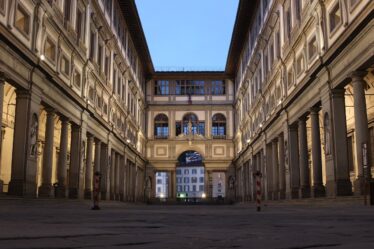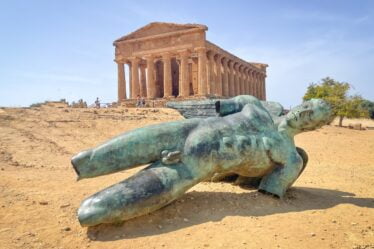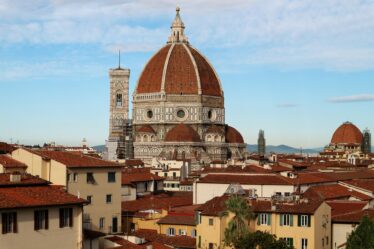
Palazzo Benci is a renowned historic building in Florence, Italy. It stands on the site where the Giotti family once owned several homes, as well as a large residence belonging to the Gori family. In 1469, Niccolò Benci di Sanna acquired these properties, but it wasn’t until the second half of the 16th century that the Benci family unified the estate, giving the building its current Renaissance design.
In the early 1600s, the palace passed to the Guasconi family, and in 1689, the Cattani family (later known as Cattani Cavalcanti) took ownership. During this period, the building underwent significant renovations. The new owners expanded the palace by purchasing adjacent properties, previously owned by the Guasconi family. The noble rooms were redecorated with frescoes and stucco, and two alcoves were added — one on the ground floor and another upstairs.
After the Cattani family line ended in 1891, Palazzo Benci was inherited by the Mannelli Galilei Riccardi marquises. The building’s stunning façade, decorated with murals, was restored in 1954 and again between 1989 and 1990. In 1901, the palace was officially recognized as a national monument due to its artistic and historical significance.
The Architectural Beauty of Palazzo Benci
Palazzo Benci’s façade is a prime example of 16th-century architecture. A standout feature is a marble bust of Grand Duke Francesco I de’ Medici, created by the sculptor Giovanni Bandini, known as Giovanni dell’Opera. This bust sits on a decorative shelf supported by ram’s heads and inscribed with texts transcribed by Francesco Bigazzi. It is said that the bust was installed as a token of gratitude to Bianca Cappello, the Grand Duke’s wife, for helping a member of the Benci family secure an important position.
The central part of the façade, with five window bays, is adorned with allegorical frescoes dating to 1575. Originally thought to be painted by Bernardino Poccetti, recent studies suggest they were created by an artist from the circle of Alessandro Allori, possibly Giovanni Maria Butteri. The frescoes include the Benci family crest, and similar artistic elements can be found in Prato’s Civic Museum. Agostino Lapini’s Diario Fiorentino records the unveiling of these frescoes in 1575, noting that they were among the most beautiful of their time.
In his 1915 publication, Illustratore Fiorentino, Guido Carocci commented on the façade’s harmonious design, noting that despite weather damage, the frescoes still display elegant, grotesque human figures and ornate decorations. The central highlight is the Benci family coat of arms, with two lions facing each other. Settimanni’s historical notes confirm that these frescoes were revealed in June 1575 and were highly admired for their artistic beauty.



